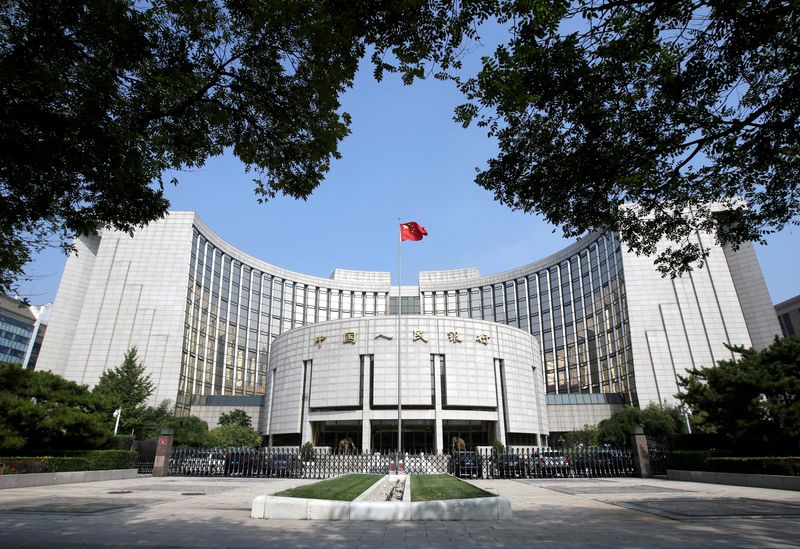BEIJING (Reuters) – New bank lending in China jumped in September from the previous month but fell short of expectations as authorities ramp up stimulus measures to stabilise the faltering economy.
Chinese banks extended 1.59 trillion yuan ($225 billion) in new yuan loans in September, up 77% from August but falling short of analysts’ expectations, data released by the People’s Bank of China showed.
Analysts polled by Reuters had predicted new yuan loans would rise to 1.87 trillion yuan last month from 900 billion yuan the previous month and against 2.31 trillion yuan a year earlier.
The People’s Bank of China (PBOC) does not provide monthly breakdowns but Reuters calculated the September figures based on the bank’s Jan-September data released on Monday, compared with the Jan-August figure.
The PBOC said new yuan loans totalled 16.02 trillion yuan for the first nine months of the year.
To spur growth, the central bank in late September unveiled its most aggressive monetary stimulus package since the COVID-19 pandemic, coupled with extensive property market support including mortgage rate cuts.
Top Chinese leaders also pledged to deploy “necessary fiscal spending” to meet this year’s growth target of around 5%.
Last week, the head of China’s state planner said the country was “fully confident” of achieving the 2024 growth target but refrained from introducing stronger fiscal steps, disappointing investors who had bet that more policy support will be needed to get the economy back on solid footing.
Finance Minister Lan Foan told a news conference on Saturday there will be more “counter-cyclical measures” this year, but officials did not provide details on the size or timing of fiscal stimulus being prepared, which investors hope will ease persistent deflationary pressures in the world’s second-largest economy.
China surprised markets by keeping benchmark lending rates unchanged in September, but analysts expect further stimulus as a projected series of U.S. Federal Reserve rate cuts give Beijing room to ease monetary policy without weakening the yuan.
The central bank earlier pledged that banks would lower mortgage rates for existing home loans before Oct. 31, as part of a broader strategy to support the ailing property market.
Broad M2 money supply grew 6.8% from a year earlier, central bank data showed, above analysts’ forecast of 6.4% forecast in the Reuters poll. M2 grew 6.3% in August from a year ago.
Outstanding yuan loans grew 8.1% in September from a year earlier, compared with 8.5% growth in August. Analysts had expected 8.3% growth.
Growth of outstanding total social financing (TSF), a broad measure of credit and liquidity in the economy, slowed to 8.0% in September from 8.1% in August.

TSF includes off-balance sheet forms of financing that exist outside the conventional bank lending system, such as initial public offerings, loans from trust companies, and bond sales.
In September, TSF rose to 3.76 trillion yuan from 3.03 trillion yuan in August. Analysts polled by Reuters had expected September TSF of 3.73 trillion yuan.
To read the full article, Click Here

